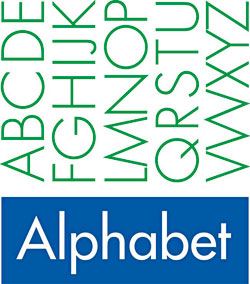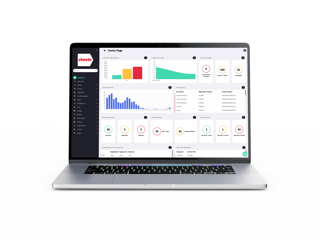Do you have a case study you can tell us about that shows how an organisation really benefited from getting to grips with its grey fleet, and the benefits it derived?
- Grey fleet plan is a winner for NHS Trust
Most people know that the NHS is the world’s third-largest employer, but few realise that it also accounts for 5% of all traffic in England.
Three years ago, the Hampshire Partnership NHS Foundation Trust decided it needed to get to grips with staff car travel. Scott Jones, head of facilities and environment at the 4,000-employee Trust, set up a vehicle group to look at the environmental and financial impact of the grey fleet and to consider its duty-of-care impact.
Its first challenge was an almost complete lack of information about car use. The Trust commissioned a fleet survey from the Energy Saving Trust, which showed that 99% of business travel took place in employees’ own cars. Total car travel in 2009 was a total of four million miles, costing more than £2 million in fuel and mileage payments.
The review also identified that the average CO2 emissions of grey fleet cars (175g/km) were nearly 20% higher than those of the Trust’s lease cars.
The Trust adopted recommendations from EST into a new travel policy covering key grey fleet topics, including road risk and finding alternatives to travel, such as teleconferencing, whenever possible.
Strategically, the aim was to shift road travel away from the grey fleet and into alternatives.
Pool cars
The Trust expanded its pool car fleet and capped the CO2 of eligible cars to 120g/km – 45% less than a typical grey fleet car.
A member of staff contacted every high-mileage grey fleet department to help them assess alternatives such as lease, pool or daily rental vehicles. The new policy allows the Trust to pay only half the usual grey fleet rate if drivers don’t take the pool car when one is available.
Wholelife costs
Lease cars are now procured on a wholelife cost basis, which favours greener cars because WLCs take account of the cost and tax impacts of CO2, fuel efficiency, Class 1A NICs and insurance.
Salary sacrifice, smarter driving and lift sharing
The Trust is considering launching a salary sacrifice scheme as a further incentive for staff to move into a new, low-emitting vehicle. It sent 200 drivers on eco driving courses, which led to a 20% reduction in fuel consumption, and is working with a car-pooling scheme to reduce the number of cars used by staff to get to work.
Data
Scott Jones is able to track vehicle travel using the NHS electronic staff record system, which he reports to the Trust board. EST calculates CO2 emissions for the Trust based on vehicle registrations and mileage. The latest data shows that lease car emissions have fallen to 140g/km.
He told the judges of the 2010 Energy Saving Trust Fleet Hero awards: “I think we have demonstrated the Trust’s commitment to reducing its reliance on grey fleet, reducing CO2 emissions, meeting its duty of care and being a good corporate citizen.”
They agreed, and in February they presented the Trust with the Grey Fleet Management Award.
If a fleet manager wants the most sophisticated grey fleet management arrangement possible, one that provides the best possible outcomes at the lowest cost, while reducing risk and with the minimum of intrusive admin, what would you recommend?
This brings us back to the fundamental issue, which is that the extent of the grey fleet management ‘problem’ is proportional to the extent of the business’s dependence on grey fleet.
If you shrink the grey fleet, you shrink the management issues. So start by looking for ways to do that.
Work out the mileage threshold where, in your company, grey fleet ceases to be cost effective and develop a plan to move high-mileage drivers into company cars (or ECO or salary sacrifice).
Stipulate daily rental cars for ad hoc journeys of more than 80 or 100 miles. Stipulate pool cars for shorter journeys. If you don’t have pool cars and have less-than-fond memories of them, talk to a good leasing company. Some leasing providers will tailor an excellent pool car package for you.
Look into making more use of the ‘sleeping fleet’ – the company cars that sit in your car park from nine to five every day.
It is better for team members to use a colleague’s company car rather than their own for short journeys during office hours.
The car is already on the company insurance and the regular driver just needs to note the mileage and claim the mileage payment.
If this is a step too far for the company car drivers, fall back on pool cars (and question whether there is a better way of remunerating staff who never use company cars on business).
All the main grey fleet issues of risk, environment and cost, revolve around mileage. If the business is unavoidably committed to private car travel, at least for the time being, you can still take steps to reduce unproductive mileage, such as introducing audited mileage capture.
Consider giving fuel cards to some of your grey fleet drivers. If drivers use more than £1,000 of fuel a year on business, the company should be buying it directly from petrol stations, not from the employees.
This does not mean that you are providing private fuel benefit, because the business deducts the cost of fuel bought with the card from the driver’s salary each month (less the amount claimed for business journeys).
Contrary to popular belief, this approach makes fiddling fuel claims harder, not easier. And it hugely increases visibility over fuel and mileage spend. If you use electronic Mileage Audit, it will do the job of splitting fuel costs out of the Approved Mileage Rate for you, making reimbursement simple and straightforward.
Record-keeping is essential and web-based tools now make it much easier to keep track of drivers, licences, insurance, maintenance, MOTs and vehicles’ age and mileage.
Drivers receive email or SMS reminders when they need to update their details. The system will automatically issue an alert if a driver doesn’t update their record or if their responses fall outside policy parameters, so that the fleet manager can manage by exception.
Don’t let the perfect be the enemy of the good. It’s much better if all your drivers have signed and returned a copy of a good, basic car policy than if no-one has signed one because it’s taking forever to get it ‘right’.
Follow the engineer’s motto: simplicate and add lightness. The simpler you make the grey fleet process, the less chance there will be of it developing a life of its own so that the tail starts wagging the dog.
That brings us back to the cost benefit question. The most important criterion for judging the success of any business solution is that it costs less than the original problem.
Or, if it costs more, then the outcomes should add commensurately more value. You can try all these management solutions but it may be better to remove the grey fleet problem altogether.



















Login to comment
Comments
No comments have been made yet.